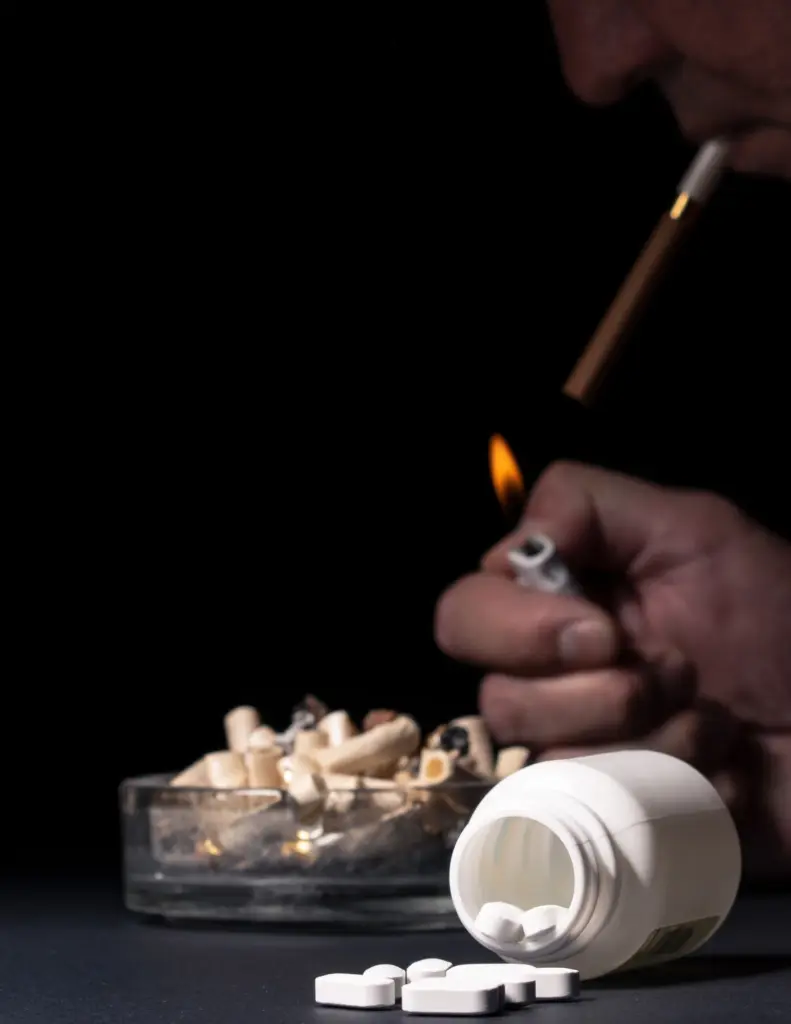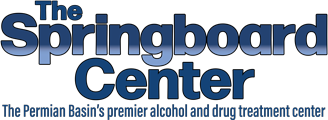Your prescription bottle says one thing, but your weekend habits tell a different story.
Maybe you take anxiety medication during the week and drink wine every evening. Perhaps you use stimulants for focus and then need something to help you sleep. If this sounds familiar, you might be dealing with something more complex than you realized.
Polysubstance addiction occurs when someone becomes dependent on multiple substances simultaneously. This pattern affects millions of people who never intended to develop multiple dependencies. The good news? Understanding the signs and getting proper treatment leads to successful recovery from even the most complex addiction patterns.
Related: Do Interventions Work? The Truth About Professional Addiction Intervention
What is Polysubstance Use and Why It Happens
What is polysubstance use exactly? It develops when someone regularly combines two or more different drugs or substances, creating physical and psychological dependence on multiple substances simultaneously. People develop this pattern for understandable reasons, though the consequences become serious without proper intervention.
Mixing Multiple Drugs for Enhanced Effects
Some people combine substances believing they can create better results than using any single drug alone. They might drink alcohol while using cocaine or mix prescription medications with recreational substances. This creates extremely unpredictable and dangerous reactions in the body.
The brain’s reward system responds intensely to these combinations. Each substance activates different pathways, creating a complex pattern that becomes extremely difficult to break without professional help.
Using Different Substances to Counteract Side Effects
Many people begin using a second substance to manage uncomfortable effects from their primary choice. Someone using stimulants might drink alcohol to calm down at night. A person taking prescription medications might use other substances to stay alert during the day.
This creates a balancing act where each substance seems necessary to function normally. What begins as a practical solution gradually becomes polysubstance dependence that requires specialized treatment to address effectively.
Developing Tolerance That Leads to Additional Drug Use
When one substance stops providing the desired effects, people often add different drugs instead of increasing their original dose. Someone whose prescription medication becomes less effective might start drinking more frequently. A person building tolerance to one substance might experiment with others.
This progression happens gradually. Many people don’t recognize they’re developing multiple substance abuse patterns until they need several different substances to feel normal throughout the day.
Common Examples of Multiple Substance Abuse Combinations

Certain combinations appear frequently in addiction treatment settings. Recognizing these patterns helps identify when casual use has evolved into a serious dependency requiring professional intervention.
Alcohol and Prescription Medications
This represents one of the most common forms of polysubstance addiction. Alcohol interacts dangerously with many prescription drugs, including painkillers, anxiety medications, and sleep aids.
Many people don’t initially realize they’re creating dangerous combinations. They might take prescribed medication as directed while drinking alcohol regularly. Both substances gradually become necessary for daily functioning.
Recovery becomes possible when people understand these interactions and seek appropriate treatment that addresses both dependencies simultaneously.
Stimulants Mixed with Depressants
People often combine stimulants like cocaine or methamphetamine with depressants such as alcohol or benzodiazepines. These combinations mask important warning signs that normally prevent overdose from individual substances.
The stimulant might maintain consciousness while the depressant dangerously slows breathing and heart rate. People might not recognize their level of impairment until serious complications develop.
Illegal Drugs Combined with Legal Substances
Many people combine illegal substances with legal options like alcohol or prescription medications. They might use marijuana along with prescription painkillers or combine energy drinks with illegal stimulants.
Legal status doesn’t guarantee safety when substances are combined. The mixture often creates more complications than using illegal drugs alone. People frequently underestimate risks because some of their substance use appears normal or socially acceptable.
Warning Signs of Drug Addiction Across Multiple Substances
Recognizing polysubstance addiction requires understanding how symptoms differ from single-substance dependency. The signs of drug addiction become more complex when multiple substances are involved, but they remain identifiable with proper knowledge.
Physical Symptoms That Don’t Match Single Drug Use
People with polysubstance addiction often display confusing physical symptoms that seem contradictory. They might appear energetic one moment and extremely drowsy the next. Pupils change size frequently throughout the day, and sleep patterns become completely unpredictable.
Physical changes happen more rapidly and intensely than with single substances. The body struggles to regulate basic functions when multiple substances interfere with normal processes. These symptoms often improve dramatically once proper treatment begins.
Behavioral Changes That Seem Unpredictable
Mood swings become extreme and difficult to predict with multiple substance use. People might seem happy and social, then become withdrawn or agitated without apparent reason. Their personality changes throughout the day as different substances affect their system.
Decision-making becomes impaired and impulsive. They might make choices that seem completely unlike their normal behavior. Work or school performance becomes inconsistent, with periods of productivity followed by inability to function effectively.
Social and Financial Problems Getting Worse Quickly
Multiple dependencies strain resources faster than single-substance addiction. People need money for several different substances, leading to financial problems that escalate rapidly. They might experience relationship difficulties as friends and family struggle to understand unpredictable behavior changes.
These challenges often motivate people to seek help once they recognize the connection between their substance use patterns and life problems. Treatment programs address both the addiction and its consequences, helping restore stability in all life areas.
Serious Risks of Polysubstance Abuse on Your Health

Understanding the risks of polysubstance abuse helps motivate positive changes before serious complications develop. Multiple substances create health challenges that extend beyond single-substance use, but early intervention prevents most serious consequences.
Overdose Risk Increases Dramatically
Mixing drugs and alcohol or combining multiple substances creates unpredictable reactions that can quickly become life-threatening. Each substance affects vital functions differently, and combinations can overwhelm the body’s ability to maintain normal operations.
Many medical emergencies involve multiple substances rather than single drugs. Treatment becomes more complicated when medical professionals don’t know which combinations are involved. However, modern emergency medicine successfully treats these situations when people receive prompt medical attention.
Organ Damage Happens Faster and More Severely
Multiple substances place increased stress on organs like the liver, kidneys, heart, and brain. These systems become overwhelmed processing different substances simultaneously, but they also recover more effectively once substance use stops.
The good news is that many types of organ damage can heal significantly with sustained recovery.
Mental Health Problems Become More Complex
Polysubstance addiction can complicate existing mental health conditions or create new psychological challenges. Different substances affect brain chemistry in various ways, making symptoms harder to identify and address.
Mental health support becomes crucial for successful recovery. Professional treatment addresses both addiction and underlying mental health needs, leading to better outcomes for people dealing with complex challenges.
How Polysubstance Dependence Develops Differently
Polysubstance dependence creates unique recovery needs that specialized treatment programs address effectively. Understanding these differences helps explain why professional help becomes essential for lasting recovery.
Withdrawal Symptoms Become More Complicated
Stopping multiple substances creates overlapping withdrawal effects that require medical supervision for safety and comfort. Professional medical detox programs manage these complex symptoms effectively, making the process much more manageable.
Medical teams understand how different substances interact during withdrawal. They provide appropriate support and monitoring that prevents dangerous complications while maximizing comfort throughout the process.
Treatment Needs Change with Multiple Addictions
Addressing polysubstance addiction requires specialized approaches that standard programs may not provide. Treatment teams must understand how different substances interact and affect recovery progress. This specialized care leads to much better long-term outcomes.
Comprehensive residential programs address the unique psychological aspects of multiple dependencies. Therapy helps people understand the different reasons they used various substances and develops effective coping strategies for each situation.
Recovery Timeline Extends Beyond Single Substance Issues
Recovery from multiple substances typically requires more time than, but this extended timeline leads to stronger, more sustainable results. The brain needs adequate time to heal from complex substance effects.
Intensive outpatient programs provide crucial ongoing support during extended recovery periods. This continued care helps maintain progress and prevents relapse during vulnerable early recovery phases.
Building sustainable recovery requires addressing multiple triggers and situations. Family programs help loved ones understand complex addiction patterns and provide effective support throughout the recovery journey.
Get Professional Help for Substance Use Disorder at The Springboard Center
You don’t have to figure this out alone. Polysubstance addiction creates challenges that require specialized care, and The Springboard Center has helped countless individuals break free from multiple dependencies. Our team understands exactly what you’re facing because we’ve walked this path with others who felt just as overwhelmed as you might feel right now.
We provide complete medical detoxification with continuous monitoring to keep you safe and comfortable during withdrawal. Our residential treatment programs address every aspect of multiple substance dependencies through individual counseling, group therapy, and evidence-based approaches that actually work.
Your recovery from substance use disorder starts with a single phone call. The Springboard Center team is ready to answer your questions, address your concerns, and guide you toward the freedom from addiction you deserve. Take that first step today.




